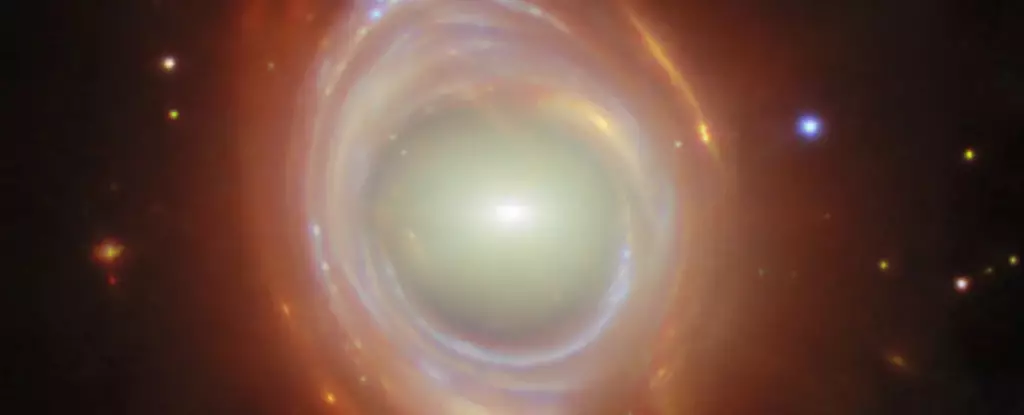The concept of gravitational lensing is one of the marvels that emerged from the theoretical framework of general relativity, a paradigm shift introduced by Albert Einstein over a century ago. Notably, one of the first profound validations of his theory came during a solar eclipse in 1919 when light from distant stars appeared to bend around the sun. This phenomenon, first captured by astronomers, not only cemented Einstein’s ideas but also unveiled a striking aspect of our Universe: that gravity can manipulate light and reveal breathtaking astronomical formations. What initially appeared as points of light in the night sky soon transformed into vast cosmic narratives, retold through the language of gravitational deflection.
The Dynamic Dance of Light and Gravity
While the bending of light around massive celestial bodies may seem like an isolated event, gravitational lensing occurs on a grand scale throughout the cosmos. When a massive galaxy crosses the line of sight to a more distant one, it creates a lensing effect that allows us to perceive distorted views of the faraway galaxy. We are not simply replacing one image with another; rather, we witness an intricate ballet of light that showcases the architectonic allure of the Universe. The resultant images can magnify distant celestial bodies—shedding light on stars and galaxies that otherwise remain hidden in the cosmic shadows. In doing so, this phenomenon gives us unparalleled insights into the formation and evolution of the Universe.
The Enchantment of Einstein Rings
Among the most extraordinary manifestations of gravitational lensing is the creation of what astronomers call an “Einstein Ring.” This rare optical marvel occurs when a distant galaxy aligns perfectly behind a foreground galaxy, producing a circle of distorted light. Imagine viewing a brilliant halo crafted from the brilliance of distant stars; it is a testament to the elegance and wonder of nature’s design. Einstein himself theorized about such breathtaking displays but deemed them unlikely to be observed with the technology of his day. Little did he know that our advancements in astronomical instrumentation would reveal dozens of these rings, mesmerizing not just astronomers but anyone enchanted by the Universe’s beauty.
Modern Discoveries Through New Lenses
Recent images acquired by the James Webb Space Telescope (JWST) offer a glimpse into the magnificence of gravitational lensing. One of the most astounding discoveries involves a particular elliptical galaxy, part of a massive cluster known as SMACS J0028.2-7537. As light from a more colorful, distant spiral galaxy beamed around this foreground galaxy, an exquisite Einstein Ring emerged—an awe-inspiring testimony to the bending power of gravity and light. This discovery not only illuminates our skies but also fosters deeper connections to the vast expanse of the cosmos. It stands as evidence that our view of the Universe is fundamentally shaped by our unique perspective in this grand cosmic arena.
A Cosmic Perspective
The beauty of gravitational lensing transcends the mere manipulation of light; it serves as a metaphorical reminder of our small yet significant place within the cosmos. Astronomers stationed on other planets, within different galaxies, might never witness the stunning images we capture from Earth, emphasizing that beauty exists within both the observer and the observed. It stirs a sense of wonder within me—a desire to explore and understand the intricacies of our universe. As we continue to probe the mysteries of space through remarkable advances in technology, the gravitational artistry of the universe stands ready to reveal even more breathtaking wonders, casting an irresistible spell over those curious enough to seek them.

